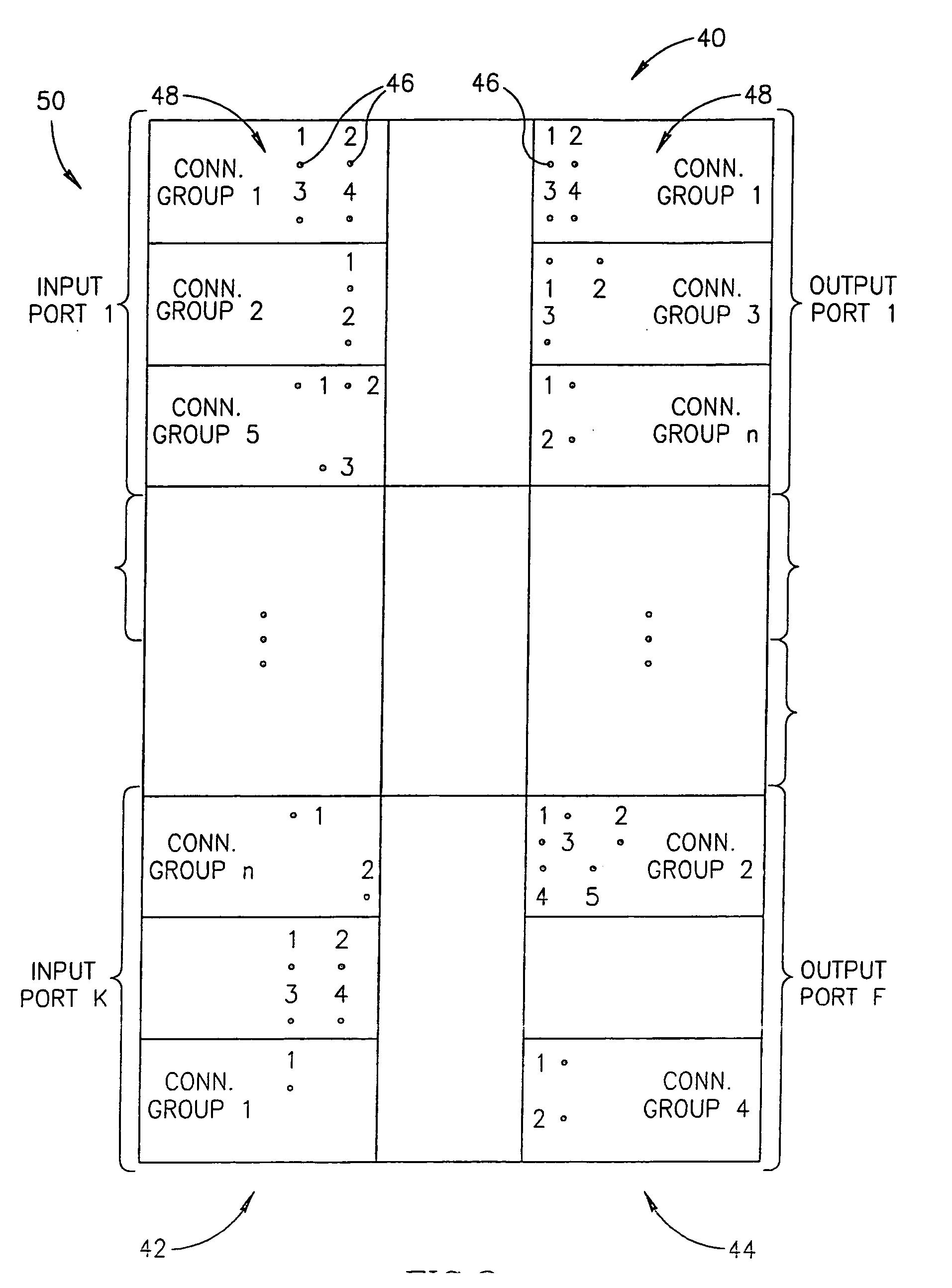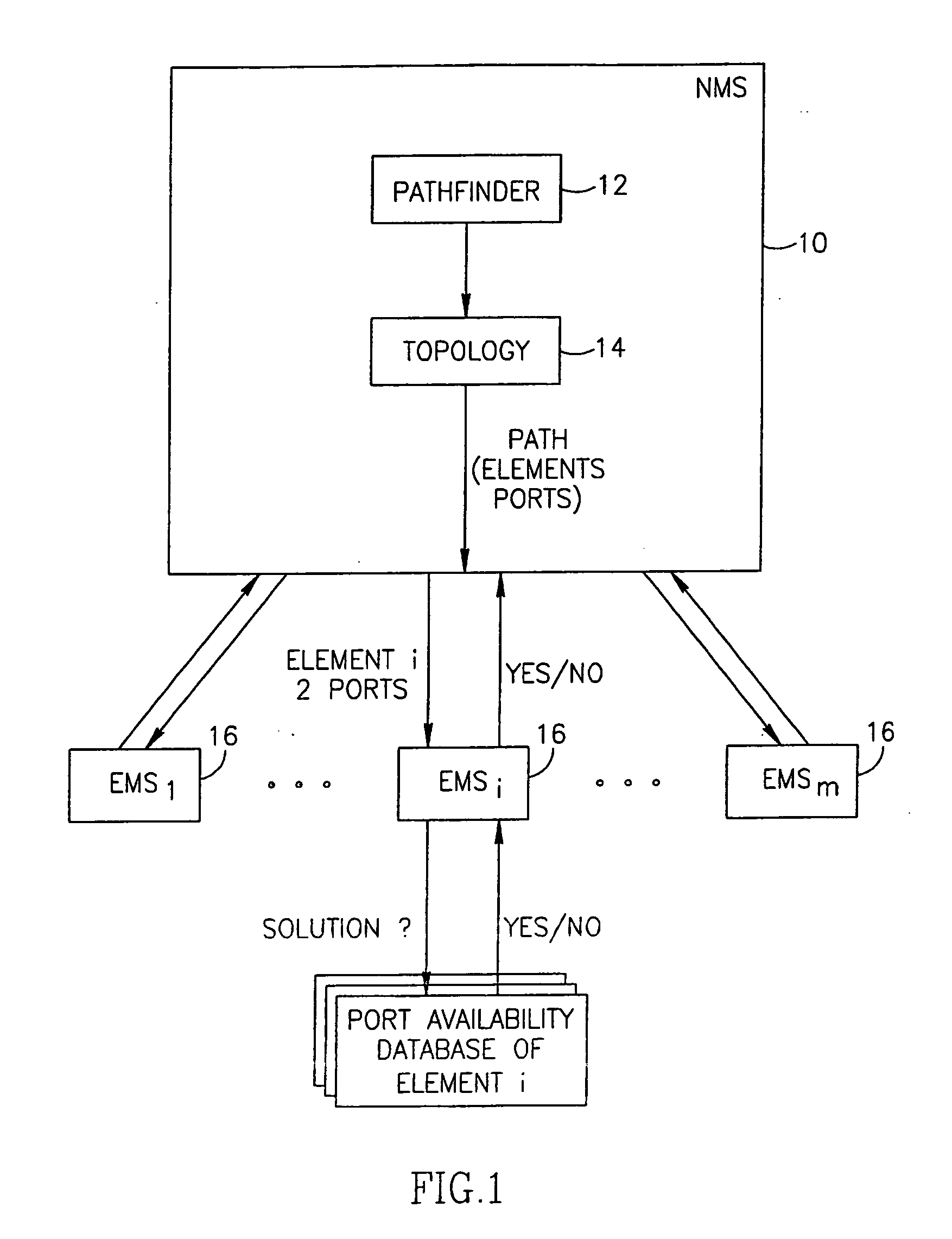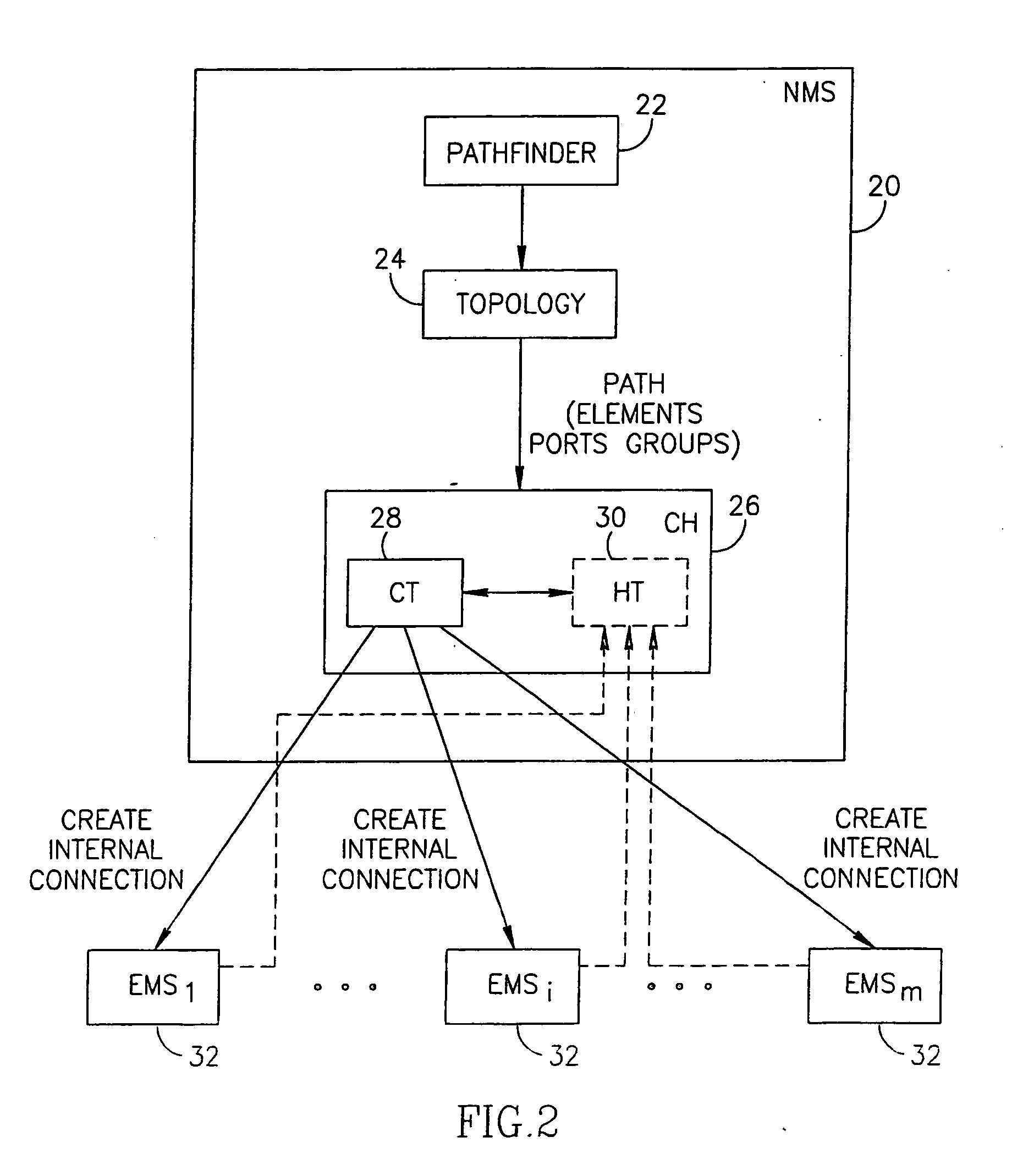Technique of determining connectivity solutions for network elements
a technology of network elements and connectivity solutions, applied in data switching networks, frequency-division multiplexes, instruments, etc., can solve the problems of inefficient process, time-consuming iterations between nms and each of the ems, and multiple exchange of protocols, so as to achieve the effect of effective performing the process
- Summary
- Abstract
- Description
- Claims
- Application Information
AI Technical Summary
Benefits of technology
Problems solved by technology
Method used
Image
Examples
Embodiment Construction
FIG. 1 illustrates a known type of interaction between NMS and EMS for finding a connectivity solution in a network element selected to form part of a path in a network (not shown). NMS (Network Management System) is marked 10 and comprises a pathfinder program (marked 12) and data on the network topology (marked 14), which is usually built as a graph reflecting the existing network elements, ports and arrangement of the elements in the network. The pathfinder's function is to select a path in the network according to a number of conditions and based on the network topology, and to form in the NMS a request indicating particular network elements and ports thereof which are to be utilized (i.e., the selected input port and the selected output port). The information on the selected ports are then transmitted from the NMS to EMS (Element Management System) of each element selected for the path (the EMS blocks: 1, i . . . n are marked with 16). The EMS of a particular network element lo...
PUM
 Login to View More
Login to View More Abstract
Description
Claims
Application Information
 Login to View More
Login to View More - R&D
- Intellectual Property
- Life Sciences
- Materials
- Tech Scout
- Unparalleled Data Quality
- Higher Quality Content
- 60% Fewer Hallucinations
Browse by: Latest US Patents, China's latest patents, Technical Efficacy Thesaurus, Application Domain, Technology Topic, Popular Technical Reports.
© 2025 PatSnap. All rights reserved.Legal|Privacy policy|Modern Slavery Act Transparency Statement|Sitemap|About US| Contact US: help@patsnap.com



